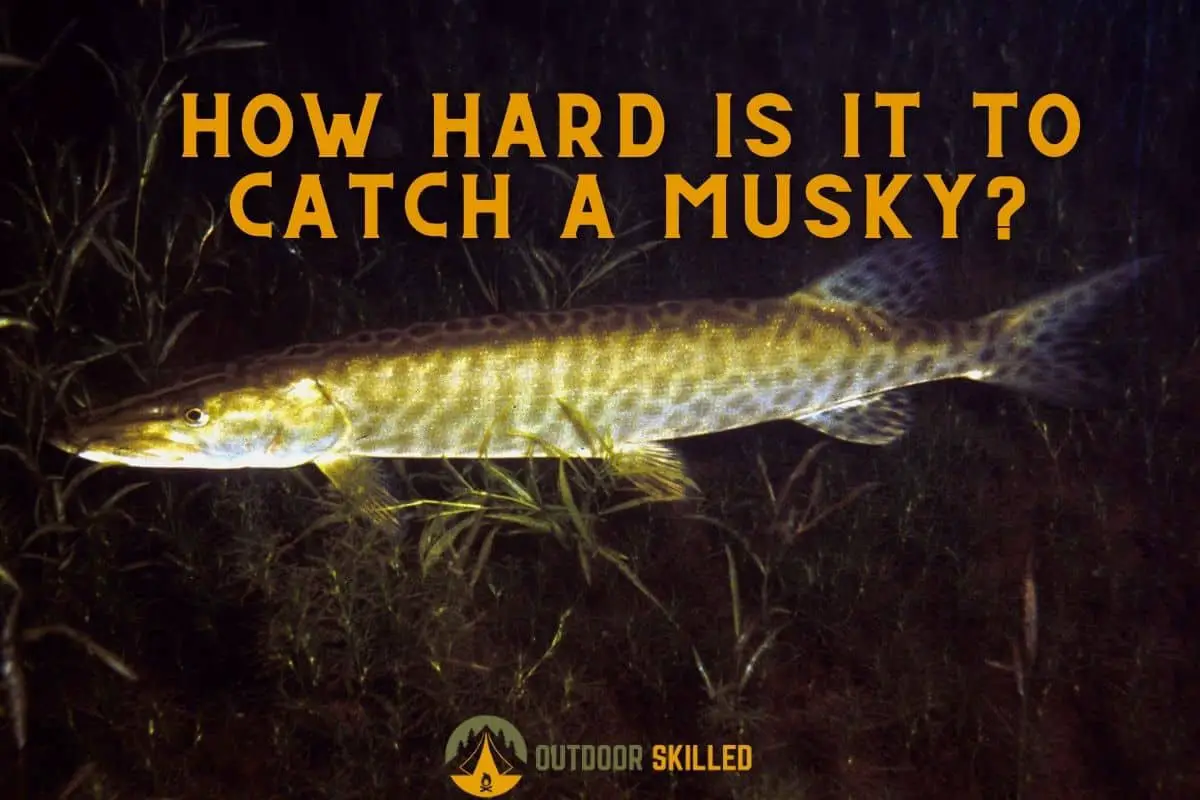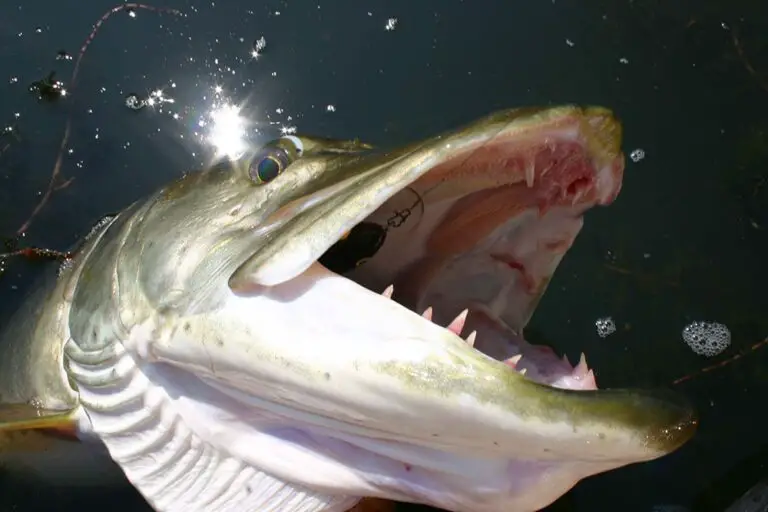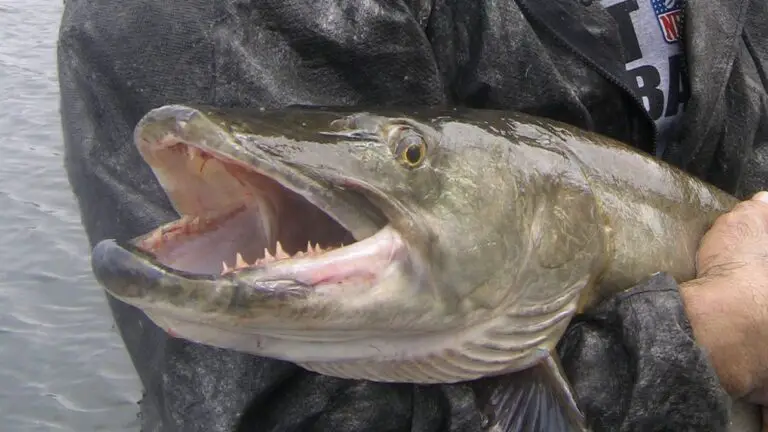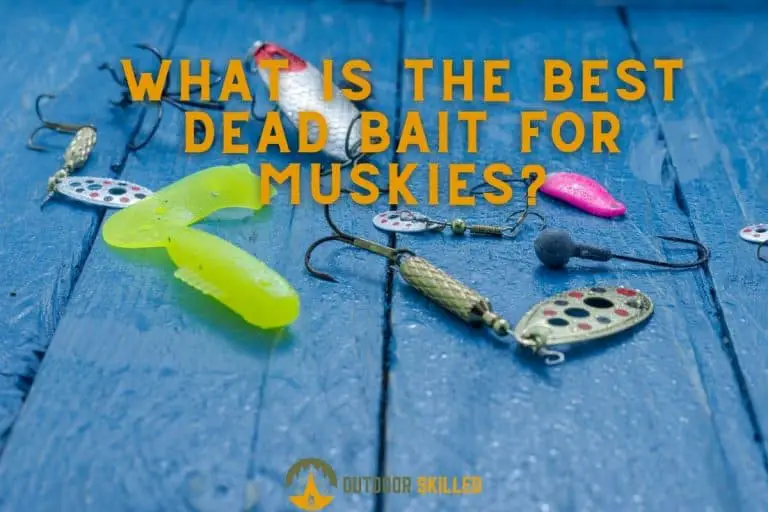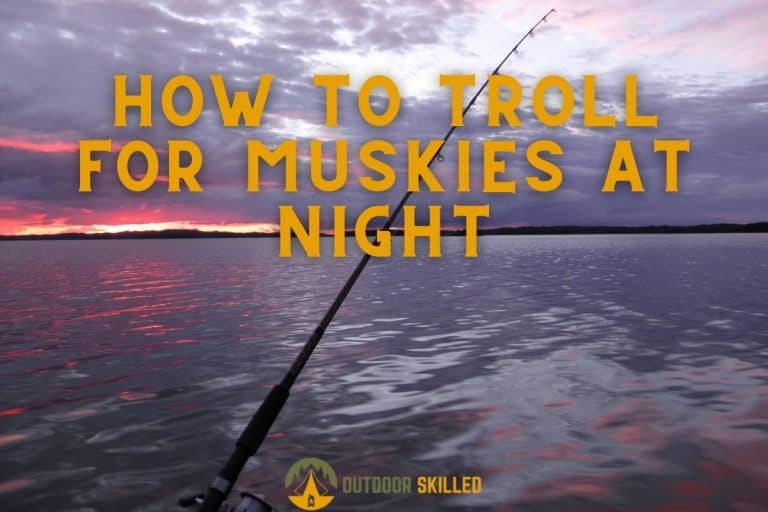How Hard is It to Catch a Muskie? A Guide to Make It Easier
The level of difficulty associated with catching muskies is no secret, especially when you realize how moody and unpredictable muskies can be. Many anglers dedicate a lot of time and effort to understanding the behavior of Tiger Muskies and the best places to catch them.
So, how hard is it to catch a muskie? Catching muskies is a hard and challenging task. They are picky, unpredictable, moody, and can put up a strong fight against the most experienced anglers. Special specific gear is needed and you must have a variety of on the boat to change between them on a single fishing trip.
Indeed, muskies are hard to catch. However, with some tips and the right tactics, your next trophy muskie is guaranteed to get on the hook. Keep reading to know how.
Table of Contents
How Hard is it to catch a Muskie, really?

Muskies are on the list of hardest-to-catch fish in the world along with Pacific Bluefin Tuna and wahoo. They present a challenge to anyone going after them, Muskies fight hard and hit your bait harder.
But the fight is something you can worry about if you had the luck to even catch one. Muskies can be caught with lots of lures, however, they’re very moody and can decide not to hit your bait no matter what you do and what you use.
What is the best way to catch a Muskie?
So what’s the best way to catch a muskie? The best way to catch a muskie is using:
- 8-to-6 feet (2.5-to-1.8 meters) medium-heavy rod.
- Good quality reels.
- Live bait like minnows. Or artificial lures like bucktails, and crankbaits.
- Drifter musky net.
Use this equipment to cast them near weed edges, drop-offs, and rock areas.
Muskies are known to be visual predators. They rely heavily on their sense of sight to move and feed, so it’s best to choose visually attractive lures. Visual lures work best whether it’s colorful or simply live and moving. That’s why live baits are your go-to when you’re fishing in a small area such as creeks, it’s easier to be seen and caught.
If you can’t get live baits, artificial ones work too if you ensure that they’re attractive enough to catch their eyes. Things like bull shad, cisco, bucktails with big silver spinners, suckers, and crankbaits have proven to be successful in catching muskies.
Topwater fishing techniques for muskies can be effective too especially in warm waters. If the creek you chose is not in its coldest state, we advise you to go for topwater fishing. It’ll get you fewer fish, but they’d be much bigger. Make sure to properly use it around prime muskie locations.
Always be ready with a good quality muskie net to get a good grip of a muskie before you unhook it. There are huge varieties out there and you can choose what best suits you from Amazon, click here to start shopping for your safe tool now!
Apart from the gear, you need to understand muskie behavior to be able to successfully detect their prime spots. Some anglers use GPS and sonar machines to detect fish markings in deep water and others prefer to predict where muskies are located according to their natural habitat.
The prime spots and times that maximize your chances to catch muskies can change according to the seasons, as follows.
In summer
Weed beds near deep water are the best spots. Muskies will leave deeper water and head to the weed beds to feed. The best times are mornings and evenings. Muskies will suspend in deeper water, so trolling with large deep-running plugs would be a great idea during this time of the year.
In winter
As the water temperature drops, look for rocks or wood that are close to deep water. Vegetation and weed edges can still be one of the targets in winter, if you had no luck there go for deeper water where you’ll find suspended trophy muskies. The best time to catch muskies will be around mid-afternoon.
In fall
Many muskie anglers agree that September and October are the peak trophy months and your chances to get one on the hook are rocket-high. When the water temperature drops and muskies start to heavily feed to put on weight before winter. Focus on afternoons and early evenings when the weather starts to get more chilly.
In spring
Small shallow lakes have better chances. Muskies will be in the shallower water, which warms up quickly and attracts spawning minnows. The best time is late mornings, early afternoons, and later in the day as the water warms up.
Why is it hard to catch a Muskie?
But Why is it hard to catch a muskie? Muskies are hard to catch because they are rare and hard to find in many water bodies, they are unpredictable and reluctant, and their mood changes rapidly during the day. They may follow the bait and never catch it or fight their way out of the lure with their strong bodies and sharp teeth.
Muskie’s anatomy of strong bodies and toothy mouth helps them put up a strong fight and win most of the time. Muskies are typically 28-to-48 inches (71-to-122 cm) long and weigh 15-to-36 lb (6.8-to-16.3 kg). This means they require special gear that can tolerate the weight and the physical fights that usually occur.
You can do everything right and follow the tactic by the book and still fail to catch a muskie. There’s nothing much you can do about this, you can’t control their volatile nature after all, but I advise you to keep going and vary your tactics and retrieve till you get it right and all your efforts will pay off.
Aside from these reasons, lots of places have state regulations banning catching muskies during some times of the year, due to their declining population number. This makes it a little harder for muskie anglers to catch them in many areas.
Can a beginner catch a Muskie?
So, can a beginner catch a muskie? Yes, beginners can catch a muskie even though it’s gonna be a tough mission. Muskies require lots of different tactics and approaches, which can be hard to follow by a beginner angler. However, with some research and practice with experienced anglers, beginners have a chance in catching muskies.
Going for muskies is very intriguing to many challenge-lovers, especially those who prefer to face the challenges on a fishing boat. However, beginners must note that muskies are not an easy catch and can be frustrating to go after in the first few trips. This fact doesn’t change how you can be well-prepared with good research and the right gear.
Don’t be disappointed if your first few trips ended without a single bite, muskies can give anglers a hard time, even the most seasoned ones of them.
To maximize your chances I recommend going with a fellow angler who has more experience in the muskies world for a couple of times to learn all about the right techniques before you hit the water alone.
11 Muskie Fishing Tips for Beginners
As I said, fishing for muskies for beginners can be frustrating, but I’m here to make your experience less frustrating and closer to success with these 11 tips:
- Be steady in your movements and walk slowly if you’re fishing onshore. Noise spooks muskies and drive them away.
- Pull hard in the opposite direction of the way the fish swims to ensure that the hook is set.
- Keep the rod tip low and to the side. Don’t vertically pull a Muskie.
- Use the “figure 8” technique to keep enticing muskies before you take your lures out of water.
- Cast in your lure and reel it fast to the boat. This tip has been tried and tested with good results.
- Use bright colors like red and yellow for your lure, as these colors work very effectively around weed beds and water plants where muskies usually stay.
- Change directions of bait to trigger muskies to chase them. Going in different directions entices hungry muskies to go after the bait.
- Vary your retrieve to best ensure you’re using the right speed. Sometimes they go after swift moves but sometimes they are triggered by much slower moves. The only way to know is to try.
- Pick areas with thick weeds and shallow rock cover where big muskies are roaming, Target weeds in the depth of 7-to-9 feet (2.5 meters), and the rocks are in the depth of 3-to-8 feet (1-to-2.5 meters).
- Try night fishing where the water temperature is suitable for Muskies to stay longer in the shallow water. Night fishing is also a good chance to catch muskies as they find it hard to see your boat so they’re not easily spooked.
- Hold your musky with rubber gloves to avoid getting a bite on your fingers.
You can learn how to handle a muskie here to get awesome pictures as well.
Related Questions
What are tiger Muskies?
Tiger muskie is a cross-breeding of the true muskellunge and the northern pike. It happens naturally in places where these two species are found. Tiger muskies have long, cylindrical-shaped bodies. The caudal fins of the tail are more rounded than those of true muskies.
What are Albino Muskies?
Albino muskie is a rare type of muskellunge that has a defect of melanin production that results in little/no color in their skin. Albino muskie is like other muskies regarding their characteristics with white skin. This defect makes them more visible so they don’t survive as long as normal muskies.
How Many Casts does it take to Catch a Muskie?
Ten thousand casts are what it takes to catch a muskie according to a popular saying. They’re hard to catch and very unpredictable when it comes to biting the lures, many anglers spend hours and sometimes days trying to get it right.
Helpful Resources
Catching Muskies through the seasons
4 Tips for Musky Fishing Beginners
If you like this article, please share it or pin it, you can find the share buttons below. We will really appreciate it ❤️


